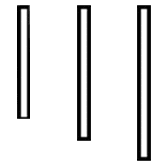-
Posts
14 -
Joined
-
Last visited
-
Days Won
1
Alkalide last won the day on May 31 2017
Alkalide had the most liked content!
Reputation
7 NeutralAbout Alkalide
- Birthday 02/28/1990
Profile Information
-
Gender
Male
-
Location
California
-
Interests
Game development, 3D art, electronic music production.
Contact Methods
-
Skype
Zokk_01
Recent Profile Visitors
764 profile views
-
I'm toying with the idea of guards trying to grab and/or tackle you first, if they see you without a weapon drawn or if you're on the opposite side of a large piece of furniture from them. Also maybe having the guards just take you into custody (still resulting in a mission failure) if they succeed in capturing you while you're unarmed, rather than straight-up try to kill you every time. But if they do catch you with a weapon drawn, they will use lethal force to subdue you.
-
I switched it over to public, so you should be able to see it now.
-
I've started collecting map reference and inspiration images for my TDM missions on a personal Pinterest board. Have a look and see if anything strikes you like it did me. I'll keep updating it as regularly as I remember or need to.
-
Thanks for the anecdote and encouragement. If Dark Radiant combined Hammer's texturing and level design tools with UE4's Blueprint visual scripting, I'd be absolutely thrilled (and be much father along with my test mission.) But as it stands, I'm constantly referencing the documentation for how to do something or where to find something that would be comparatively obvious and easy in either of the aforementioned editors.
-
I can think of a couple of different ways to safeguard against weird transitions, but they mostly involve line traces. I admit, I have no experience with idTech 4, except for the hour or so I've spent scanning through the source code, and the few hours I've spent already working with Dark Radiant on a test mission. So I don't know what it's capable of on its own, or how difficult/complicated it would be to build new features into it or anything. I'm not ignorant of the challenges of using any engine, but some engines are easier to work with than others (which is why I'm using Unreal in the first place.) On a side note, I have about a dozen hours logged working with ShockEd (System Shock 2's editor) and hundreds hours (nearly 800, I think) logged using Half-Life 2's Hammer editor. Coming from Hammer, I'm finding Dark Radiant and ShockEd incredibly clunky, but I am still getting used to them.
-
1. TDM doesn't have (or could it be coded in?) full-body IK support, does it? An FBIK solver would take care of that pretty well, if done right. 2. I don't know how TDM handles AI navigation, but in Unreal, ladder navigation is usually handled by a trigger volume that changes the character's movement mode, and constraining it to the Z-axis for the length of the ladder. Getting on or off a ladder just involves interpolating the character between 2 points while playing an animation (or using root motion.) There's more to it than that, but that's the general principle. 3. The Dark Souls series handled this pretty well. Alerted enemies would follow the player up a ladder, and when they got close enough to the player, played an on-ladder attack animation to damage the player. Same thing with the player: if they were trying to attack on a ladder, a special attack animation would play (either swinging or punching up or swinging or kicking down at the enemy, while still holding the ladder) and the enemy would take damage if they were hit by it. During each attack, combatants remained stationary on the ladder.
-
To be perfectly honest, I'm using Unreal because I can't code to save my life, and the UE4's blueprint system lets me get around that with ease. That's the main reason I'm using it. That, and it's really well documented and supported, and I already understand it's import/export system.
-
You make good points and comparisons there; a few things that now that I think about them, would be good to change or more clearly define early on.
-
The prototype is just a personal project/tech demo right now, but it might become something for my portfolio later on down the line. I doubt it'll ever make it to market, but I'm considering distributing it for free online when I feel it's ready for testing and official release. I wouldn't consider it a TDM or triple-A competitor by any significant measure, since my knowledge, talent and resources are limited to what I can do on my own for free, but I can't foresee how many people might take a liking to it and/or want to help improve or expand it. I'm currently developing it with a single-mission campaign in mind, but I'm toying with the idea of leaving it open for people to make their own missions for it, using Unreal Engine 4. In that sense, it could be a TDM competitor, but I don't know how likely that is. Right now, I'm calling the project Unreal Shadows, just to give it a codename/working title.
-
The 'loot zone' is a good idea to compensate for the fact that inventory items can make noise as you move. I've done a bit of research on the severity of knockouts, and it seems that any period of unconsciousness longer than a few minutes is indicative of a traumatic brain injury and permanent brain damage. Given the system to hold down the mouse button and release it to regulate throw power, I'd extend that to a blackjack, where a light hit would alert the guard, a medium hit would knock them out for a length of time proportional to the power of the swing, and a heavy hit would potentially kill them. Having the AI able to use ladders and ropes is another good idea, and totally do-able in Unreal. Basically, anything navigation ability I can give to the player (crouching, climbing, mantling, etc) I can give to the AI, given some adjustment. Having the AI throw things at the player if they can't reach them is also a neat idea. I'll definitely look into different location tracking systems (I'm certainly not going to use a mini-map and objective markers, though). I'm considering setting the game in a modern/contemporary setting, so the player could have some kind of GPS-like system that marks the player's location with an marker on a static map. I'm also planning on including options for what equipment you take with you at the start of a mission, as well as placing equipment in the level for the player to pick up if they choose. Yeah, I'm kind of a sucker for simulation games. I like the challenge, I guess. I'll most definitely be balancing the game so it's fun though, even if that means sacrificing some simulation aspects to improve the fluidity and satisfaction of gameplay. If it's not fun, it's not a game, it's a chore.
-
So, I'm working on a stealth game prototype in Unreal Engine 4, and I although I have a pretty solid idea of the gameplay mechanics I want to implement in it, I'm curious what other people might want to see in their 'ideal' stealth game. Currently, I have the following somewhat-extensive list of features in mind, aside from the obvious light measurement system: Manual movement speed and stance adjustment via mouse wheel scroll. (See Splinter Cell 1) Increasing movement speed increases the noise you make. Analog leaning via a modifier key and mouse movement. (See Joe Wintergreen's stealth game prototype) Analog door, handle, switch, latch, window and lid manipulation via a modifier key and mouse movement. (See the Penumbra Trilogy) Size and weight-based inventory, where the more items you carry, the louder you are when you move. True first-person perspective, where you can see your character's body. All inventory items are physically represented on your character, and collide with the environment. The ability to climb, mantle, vault, shimmy, hang from and drop down from just about anything you could in real life (all the way down to ledges approximately 2-5 cm deep.) Realistic knock-outs, where the victim is only unconscious for a few seconds to a minute. The ability to tie up (and possibly gag) an unconscious victim. Body dragging and carrying. AI that will search under furniture, in containers and above their heads to try to locate the player. A toggle-able free-look, where the player's view is independent from where their body is facing. Fit through any reasonably-sized gap in fences, gates, railings, etc. Regulate object throw type and throw strength via left or right mouse button and button hold time. A static map and a compass as usable inventory items. Simulated or semi-simulated lock picking. Leaning against thin doors and walls allows you to hear what's on the other side. Obviously, a lot of these features are subject to change based on how clunky they turn out to be in practice. But now that I've put out my list of ideas, I'd like to hear from you all what you'd want to see in a new stealth game. I'm open to any and all suggestions, comments and criticisms, since I'm only just now beginning to prototype the game.
-

How Does the Light Awareness System (LAS) Work?
Alkalide replied to Alkalide's topic in The Dark Mod
Ah, thanks for clarifying; I get what's going on now. And I think I should be able to come up with a similar system in Unreal based on what's here. I might post a thread about the stealth game progress in the Off-Topic section here eventually if anyone's interested in seeing that. -

How Does the Light Awareness System (LAS) Work?
Alkalide replied to Alkalide's topic in The Dark Mod
Good info, but I think I have the wrong term for what I'm trying to understand. I'm interested in how the the game calculates the level of light hitting the player. As I understand it, the old Thief games used checks on the lightmap value immediately around the player. I've seen more modern examples get an array of lights from within a certain distance of the player, subtract the occluded ones, get the parameter values of the unoccluded ones, compare the player's position to the attenuation radius of each one, and calculate the player's light level based on some formula I don't know (probably some arbitrary values set by the developer.) Does TDM do something similar to that? -
I'm not sure if this should go here or in the Tech Support section, so If this is the wrong place, please let me know. As a hobbyist game developer, I'm curious about how the Light Awareness System works in The Dark Mod. I've been poking through the source code, but haven't found any definitive math explaining it, or code comments mentioning on how it's calculated. If anyone could point me to exactly where to look, or could explain what steps and/or math it's using to calculate how visible the player is, I'd greatly appreciate the insight. For reference, I'm trying to implement a similar system in my own stealth game I'm working on in Unreal Engine 4.



